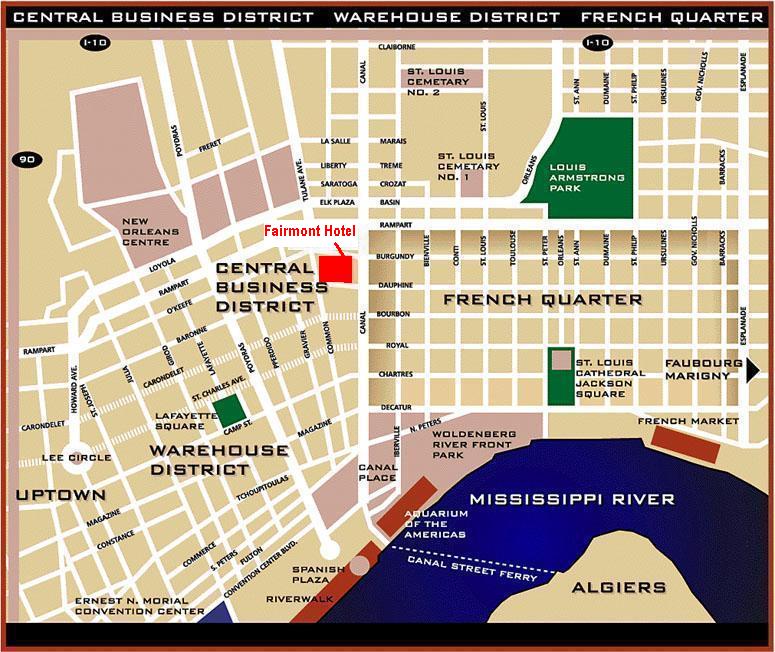| |
In Faubourgs Marigny
and Treme, mixed-race persons predominated. By 1840 femmes
de couleur libre owned about 40 percent of the property there.
Much of this was result of inter vivos donations from white
men who wanted security for these femmes de couleur, whom
the law did not permit to inherit real property. A double
creole cottage, for example, providedboth a home and a means
of support from the rented side.

French Quarters |
The golden age
in New Orleans for those Creoles fortunate enough to be free
was the 1830's and 1840's when they produced notable architects
and builders, artists and musicians, as well as manufacturers
and entrepreneurs in wide variety of businesses.
That golden
age is captured in the buildings they built and lived in. With
the advent of the Civil War three-fourths of the buildings lots
in Faubourg Marigny had been owned at least one time by
gens de couleur libres.
The
numbers in Faubourg Treme surpassed that. For example, Aristide
Mary, a free man of color, inherited from his Caucasian father
major buildings on Canal Street in the new American sector,
and leased both residential and commercial property to prominent
creoles and Americans prior to and following the Civil War.
He used the profits in 1892 to instigate the far-reaching lawsuit
Plessy v. Ferguson, led by Faubourg Treme French Speaking creoles
of color Homere Plessy and the writer Rudolphe Desdunes. Their
efforts to test the constitutionality of the Jim Crow law resulted
in the establishment of the separate but equal doctrine in public
areas. In these ways and others, New Orleans persons of color
profoundly affected American history.
These men and women are gone, but their
neighborhoods with buildings as solid as the social and legal
effects of their endeavors remain. House Histories disclose
that most persons of color who owned real estate owned slaves,
too. These slaves were tied to the properties of their owners,
rural and urban.
In fact, slaves, like some real estate, often
were included with the land title-not by law-but by tradition.
Examination of property titles shows how slaves were sold or
manumitted, how they bought their freedom or how they were exchanged
in tandem with house sales and property settlements.
Only
in New Orleans will building-watching, supplemented by archival
findings, reveal the full spectrum of
creole culture in the South. A census today shows that
Creoles hold ethnic majority in the city, but only architecture
and its accompanying records uncover the important role men
and women of African heritage played in developing this port
city.
Since 1726 talented architects and builders, ironworkers,
and real estate developers have emerged from this community
of personnes de .In Faubourgs Marigny and Treme, mixed-race
persons predominated. By 1840 femmes de couleur libre owned
about 40 percent of the property there. Much of this was the
result of inter vivos donations from white men who wanted security
for these femmes de couleur, whom the law did not permit to inherit real property.
A double creole cottage, for example, provided both a home and
a means of support from the rented side.
The French and Spanish creoles found Anglo-American attitudes
toward these women and other well-to-do personnes de couleur
libres atrocious. Americans even had the nerve to disapprove
of the long-established custom of placage. While the Code Noir
of 1724 and subsequent Spanish law, enforced by post-1803 American
regulations, prohibited marriage between whites and blacks,
slave or free, custom permitted white men to set up housekeeping,
a placage, with femmes de couleur libre, called their placees.
The children of
these arrangements were, acknowledged by their white father
before a notary, natural children, not illegitimate, and these
children inherited and equal share of their father's estate.
Such was the case in the
family of Narcisse Broutin, a notary and distinguished French
creole, descendant of the king's engineer who designed the Ursuline
Convent. In his will of 1819, Broutin declared that he had never
been married and had "no legitimate descendants."
He acknowledged his children Rosalie, Augustine, and Frumence,
born of Mathilde Gaillau, a free woman of color, who lived with
him in his dwelling in Faubourg Marigny. Broutin left these
children one-half of his property, all the common law allowed
for legitimate children.
Another important resident of the creole suburbs was Thomy Lafon,
homme de couleur libre and prominent businessman, philanthropist,
and benefactor to the community of personnes de couleur. He
retreated into the creole Faubourg Treme to avoid the new Americans.
His father was the French architect and surveyor Barthelemy
Lafon.
These are just a few examples of the hundreds of men and women,
black and white, who moved to the creole suburbs to preserve
their culture and to take advantage of Bernard de Marigny's
inexpensive lots on streets he gave esoteric names, such as
"Craps," the popular card game, or "Bons Enfants."
Lot prices started at about $108, suitable for the small investor.
French Quarter/ Faubourg
Marigny Gallery (other notables):
|
|

